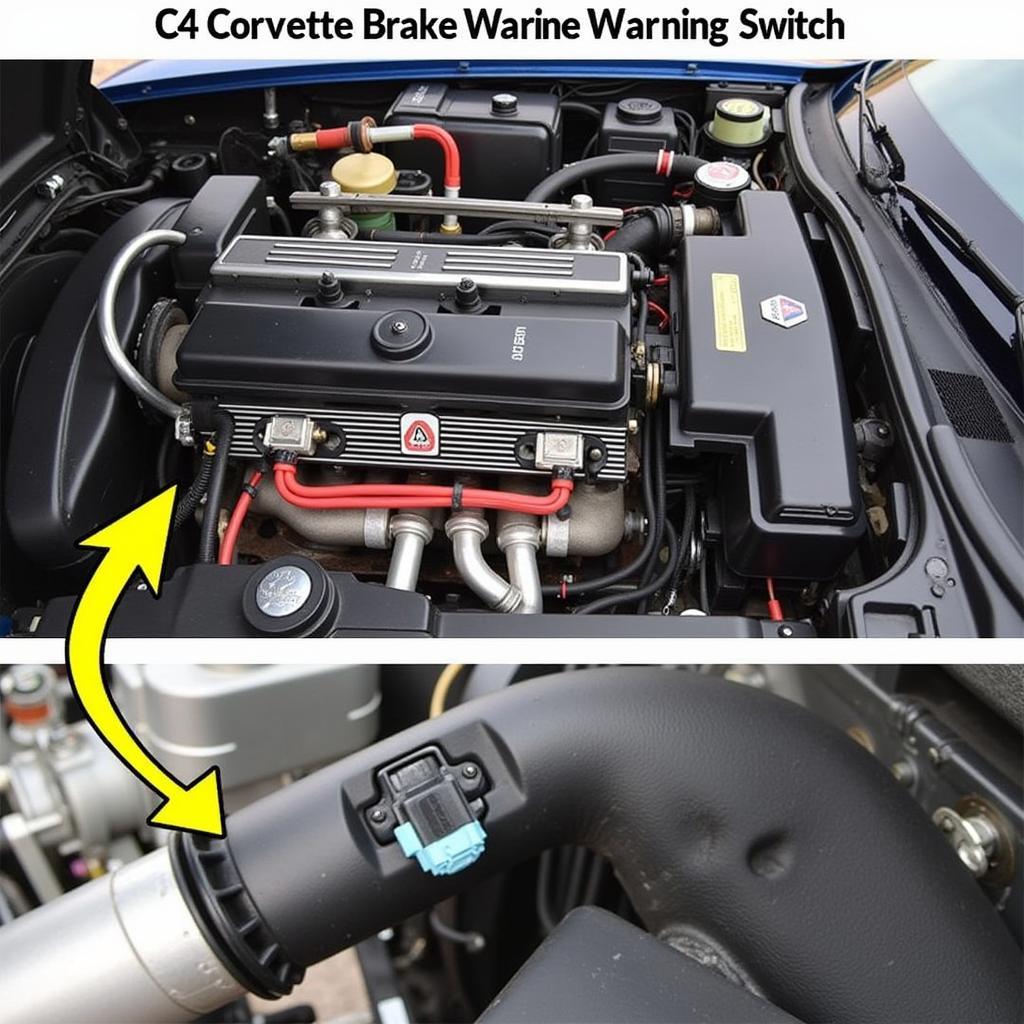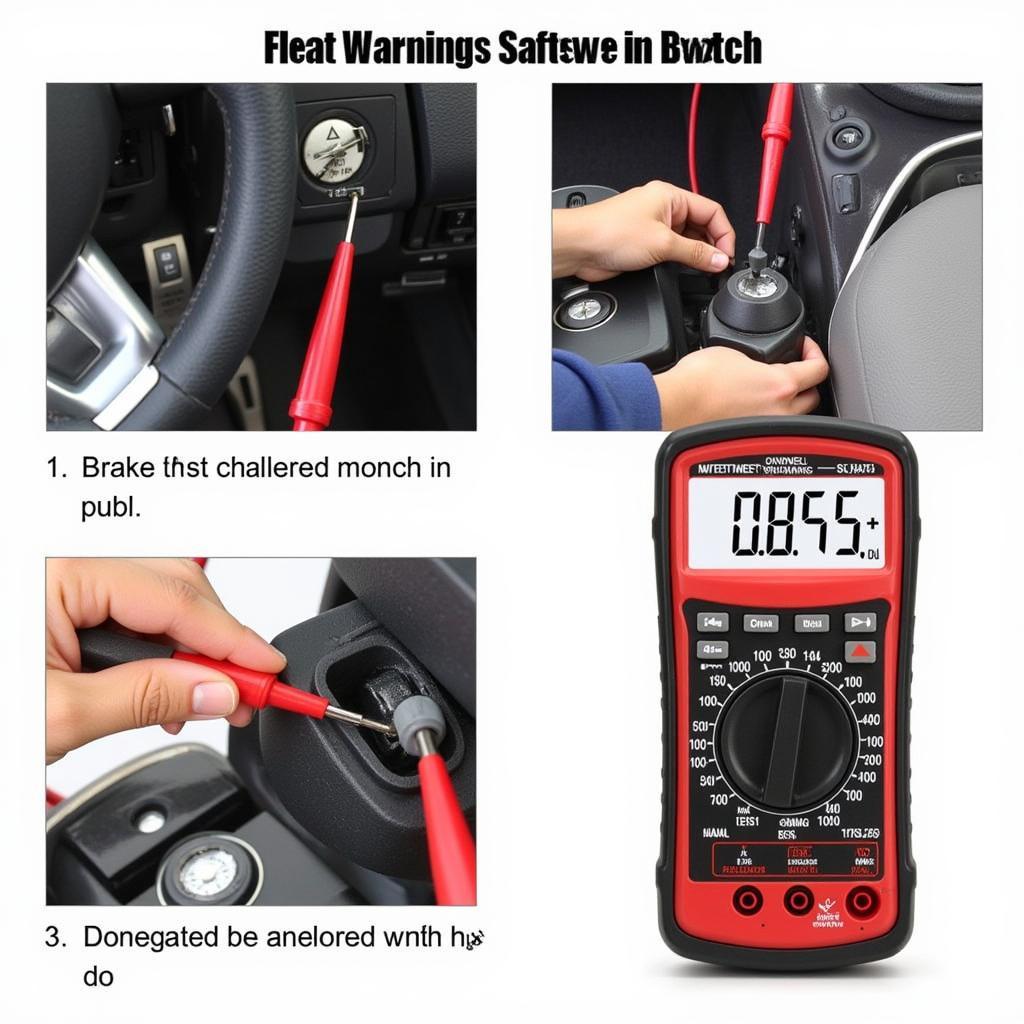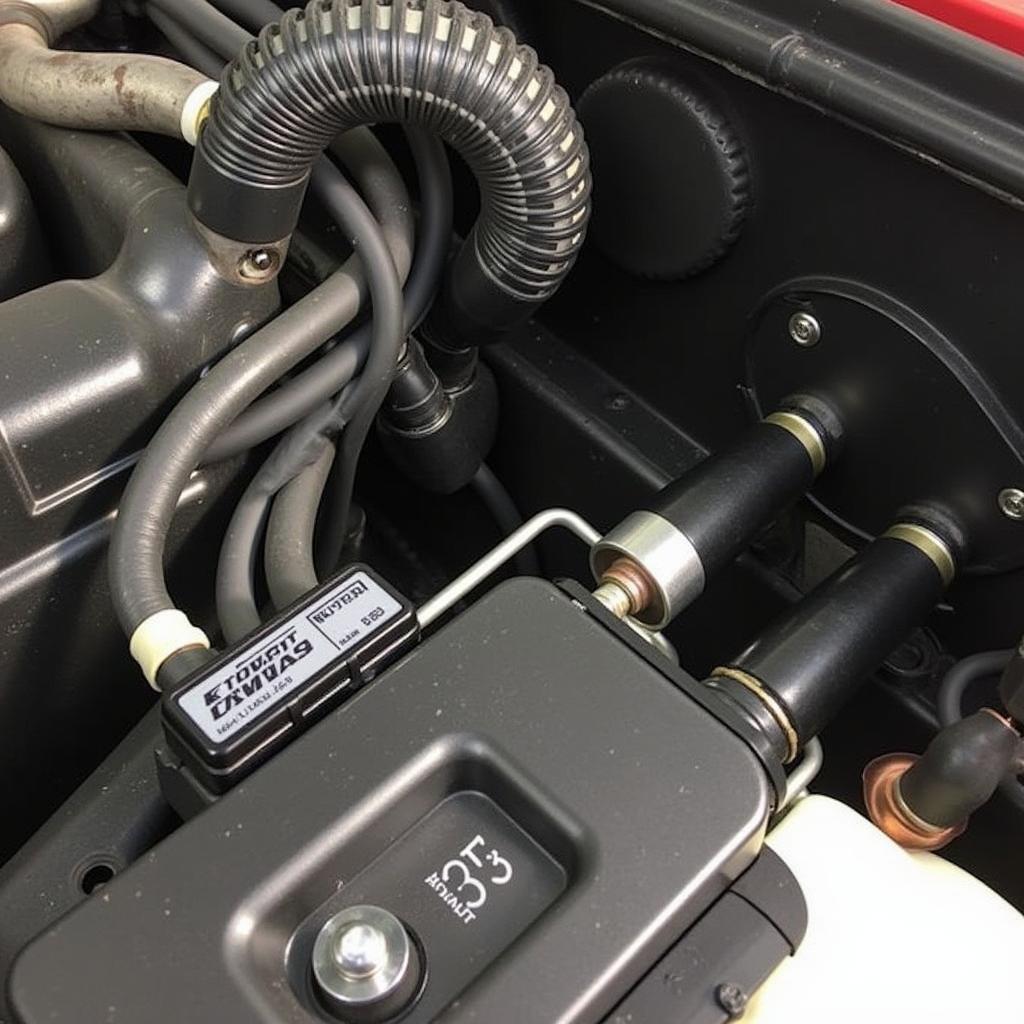The brake warning switch in your C4 Corvette is a critical safety component. A malfunctioning switch can lead to a persistent brake warning light, even when your brakes are functioning correctly, or worse, no warning light when there’s a genuine issue. This article will cover everything you need to know about diagnosing and fixing problems related to the brake warning switch in your C4 Corvette.
The brake warning switch itself is a relatively simple device. It’s designed to activate a warning light on your dashboard when there’s a pressure differential in the brake system, often indicating a leak or other problem. Understanding how it works, and how to troubleshoot it, can save you time and money. Let’s dive in.
Understanding the C4 Corvette Brake Warning Switch
The brake warning switch is located beneath the master cylinder and is connected to the brake lines. It monitors the pressure balance between the front and rear brake circuits. If a leak develops in either circuit, the pressure differential triggers the switch, illuminating the brake warning light. This early warning system allows you to address brake problems before they become critical. Find more information on our page about brake warning switch size c4 corvette.
Common Symptoms of a Faulty Brake Warning Switch
- Constantly illuminated brake warning light: This is the most obvious symptom. If the light stays on even after checking your brake fluid level and ensuring there are no visible leaks, the switch itself might be the culprit.
- Intermittently illuminated brake warning light: A flickering or occasionally appearing brake light can also point to a faulty switch, especially if it doesn’t correlate with actual brake issues.
- No brake warning light: A more dangerous scenario is when the switch fails completely, preventing the warning light from illuminating even when there’s a genuine brake problem. Regular brake system checks are crucial.
 C4 Corvette Brake Warning Switch Location
C4 Corvette Brake Warning Switch Location
Diagnosing a C4 Corvette Brake Warning Switch Problem
Testing the brake warning switch is a straightforward process. You can use a multimeter to check for continuity. With the ignition off, disconnect the electrical connector from the switch. Using the multimeter, check for continuity between the two terminals on the switch. The switch should be open (no continuity) with the brakes off, and closed (continuity) when the brake pedal is depressed. Alternatively, you can check the voltage at the electrical connector with the ignition on. You should see battery voltage with the brakes off and zero voltage with the brake pedal depressed. Learn more about the c4 corvette brake pressure warning switch.
Common Causes of Brake Warning Switch Failure
- Age and wear: Like any mechanical component, the brake warning switch can wear out over time. Exposure to brake fluid, heat, and vibration can contribute to its eventual failure.
- Corrosion: Corrosion on the electrical terminals can disrupt the connection and cause intermittent or complete switch failure.
- Physical damage: Impacts or other physical damage to the switch can also cause it to malfunction.
 Testing C4 Corvette Brake Warning Switch
Testing C4 Corvette Brake Warning Switch
Replacing the C4 Corvette Brake Warning Switch
Replacing the brake warning switch is a relatively simple DIY task. Start by disconnecting the electrical connector and then use a wrench to remove the switch from the brake lines. Be prepared for some brake fluid leakage. Install the new switch, reconnect the electrical connector, and bleed the brakes to remove any air that may have entered the system. It’s crucial to choose the correct replacement switch for your C4 Corvette model year. Information on the combination proportioning brake light warning valve can also be helpful.
“Regular brake system inspections are crucial, especially for older vehicles like the C4 Corvette,” advises John Smith, ASE Certified Master Technician. “Don’t ignore a persistent or intermittent brake warning light. It could be a simple switch issue, or it could indicate a more serious problem.”
Tips for Preventing Future Problems
- Regularly check your brake fluid level and condition.
- Inspect the brake lines and calipers for leaks and damage.
- Consider replacing the brake warning switch proactively as part of your regular maintenance schedule, especially if it’s showing signs of age or wear.
“Addressing brake issues promptly can prevent costly repairs down the line,” adds Sarah Jones, Automotive Engineer. “A small investment in preventative maintenance can save you a significant amount of money and hassle in the long run.”
Conclusion
The brake warning switch in your C4 Corvette is a vital safety component. Understanding its function and knowing how to diagnose and replace it can help you maintain a safe and reliable vehicle. Don’t ignore a persistent brake warning light—addressing the issue promptly can prevent more serious problems.
 New C4 Corvette Brake Warning Switch Installed
New C4 Corvette Brake Warning Switch Installed
FAQ
- What does the brake warning light mean on a C4 Corvette? It indicates a potential problem with your brake system, such as low fluid, a leak, or a faulty switch.
- Where is the brake warning switch located on a C4 Corvette? It’s located under the master cylinder, connected to the brake lines.
- How do I test a C4 Corvette brake warning switch? Use a multimeter to test for continuity or voltage at the switch connector.
- Can I replace the brake warning switch myself? Yes, it’s a relatively simple DIY job.
- How often should I replace the brake warning switch? Consider replacing it proactively during regular maintenance, especially if it’s older.
- What happens if I ignore a brake warning light? Ignoring it could lead to more serious and expensive brake problems.
- Can a faulty brake warning switch cause the brakes to fail? The switch itself won’t cause brake failure, but the underlying problem it indicates could.
